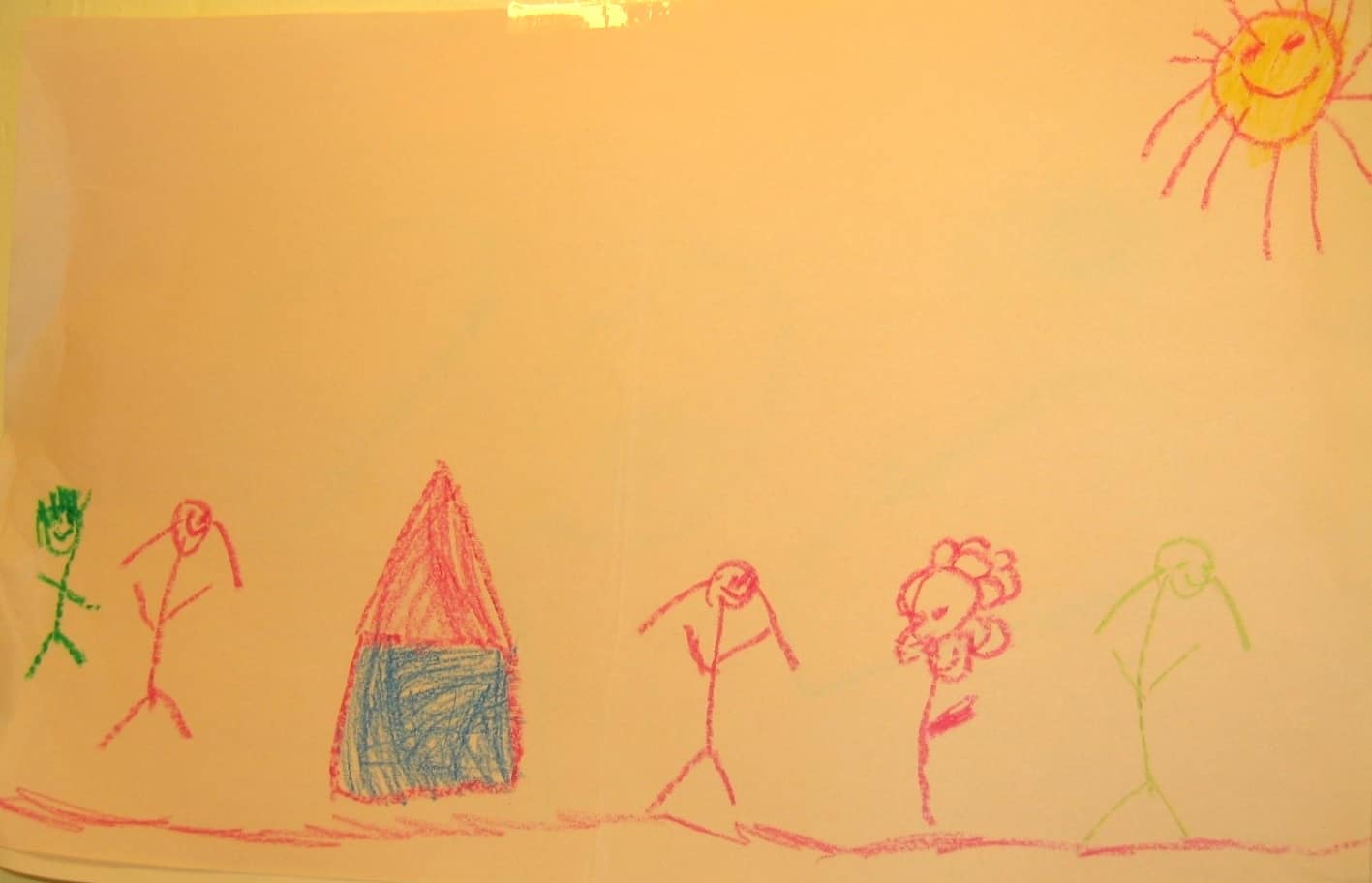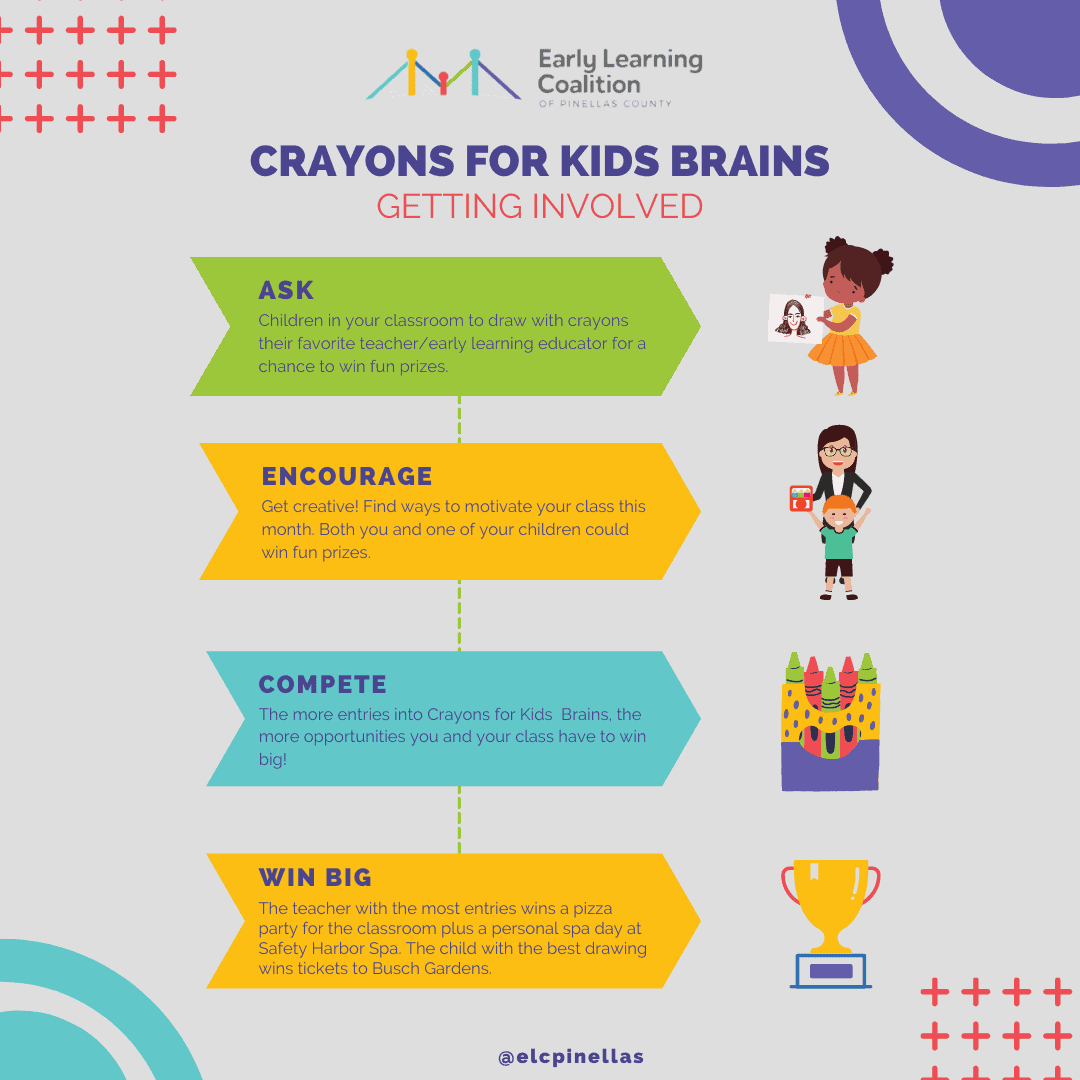How A Local Non-Profit is Using Creativity to Boost Brain Development
On March 31st, National Crayon Day – a day to celebrate the creation of crayons and the joy of coloring – was celebrated around the country. In conjunction with that, the Early Learning Coalition of Pinellas recently initiated the Crayons for Kids Brains Campaign to help share the importance of drawing and art in the brain development of a young child and how vital early education is in ensuring children in the Tampa Bay area have the tools they need to thrive.
We recently spoke to Lindsay Carson, CEO of ELC Pinellas, about the initiative and how creativity plays a vital role in young development.
Tell us a little bit about what you're doing.
Lindsay: The early Learning Coalition our mission is to prepare kids for kindergarten. Essentially, that's what we're working here for and a lot of times people I think are so focused on early literacy, which is very important. But between the apps and the programs and all those things, sometimes I think we forget the basics.
So, when we saw that Crayola was doing a National Crayon Day, we thought this is a really great time for us to remind everybody that kids need to be kids and there's so much happening developmentally during that phase. We don't want to rush it and it doesn't need to be replaced with a screen. They put their hands in their dirt and they need to hold a crayon and really begin to draw and just be creative. Not color in the lines, just be creative and explore. So much seems to be out of control these days and their lives. There's so much pressure from every angle on all of us, including our little ones, and so sometimes we just forget some of those very basics.
Every one of us has the memory as a kid of having the big 64 pack with the sharpener in it and drawing just the perfect picture. I still have pictures that my kids drew as very young children that are hardly distinguishable, but still so important in their development. But especially with young kids, we talk about the process, not the product. So, it's not just about what they come up with but it's the experience of doing it. It makes such a difference.

How do you think Crayons for Kids will enhance this?
Lindsay: What we've done is open it up to families all over Pinellas County so that young children can submit their drawings and just to kind of get some excitement behind this concept and again remind everybody what's so important and bring them back to that. We’re collecting those so that we can feature some of the great work that our young children are doing and drawing so that we can celebrate them. They’re going to be featured through our social media. We'll probably have them featured also in some of our offices as folks are coming in so they can see them.
What's a good way to inspire kids to want to draw?
Lindsay: However, there are different ways to really inspire our kids. Of course, initially just getting them to put crayons to paper and make some marks, they lose some interest in it. Doing things like taking them to museums so they can see different artwork can be helpful for our younger guys instead of just saying, ‘let's draw a picture,’ say ‘let's draw something for grandma, or let's draw a picture about your day.’
Now you're drawing those connections which really supports their development. So, if you see a bright yellow rose on your way to the park as you're going for a walk, then say, ‘let's draw a picture of that,’ and maybe in that moment, suggest that to them so that when you mention it at home, they've kind of taken a mental picture in their head and they're looking forward to doing that drawing. They're tying it together and then you can talk about it.
What would you tell parents how to how to deal with kids’ dependency on electronics, and how to get them motivated to get offline and get creative?
Lindsay: Of course, having the sharp crayons, those kinds of things also make a difference. Giving them different mediums. You know, it doesn't always have to be on a piece of white paper or construction paper. We want to teach them the appropriate places to draw with crayons but having different mediums like letting them draw on an envelope because it’s something different. Or fold the paper so they're making it into a book, and they can open and close it.
Simple things like that also really do get them motivated in it and there's something so different about holding a crayon than being on a tablet, in part because of muscle development. When you're holding a crayon, just like when you're playing with big blocks, those are the those are building the muscles. In order to write, you have to be able to do that.
And then as they get older too, those drawings take it from the abstract. You know, seeing something but really make it, for lack of a better term, 3D-like. They're actually doing it with their hands. Seeing the letter A on an app or pushing the button of the letter A on an app compared to taking a crayon and drawing an A with your hands is different. The muscle memory makes the connection in the brain, and drawing something like an apple next to the A ties it all together. It creates an interactive experience and creates that bonding moment.
And pro tip – don't guess what it is that they're drawing! Say ‘tell me about your drawing,’ because it gives them the opportunity to express themselves, and that is language development which is a precursor to literacy, so it opens up such a world to imagination.

How does ELC Pinellas help kids in other areas?
Lindsay: The Early Learning Coalition is really here to help families access high quality early learning, and that comes in a variety of ways. We do scholarships through our school readiness program for low income and at-risk children where we pay a portion of their tuition so that those families can work and those children get a high quality experience. That prepares them for kindergarten.
We administer the voluntary pre-kindergarten program which is Florida free program for all four-year-olds to prepare them for kindergarten, available through private providers throughout the county.
We don't operate any direct childcare centers. Instead, we contract with small businesses so the mom and pop preschools, family, child care homes, licensed family, child care homes and then of course we have the VPK program is offered primarily through those private providers but also through the public school system and then most of our small preschools.
How do you think incorporating more creativity can help them down the road?
Lindsay: When children build confidence, they are able to approach things with that. With no limitation, with no boundary, they just say ‘hey, I can draw anything, I can do anything,' and next thing they know, they're adults and they are solving real world problems with that creativity and developing and inspiring that creativity at an early age.
You know, it starts with crayons, but it doesn't mean that they're not going to be the next microbiologist to cure something because they feel confident like ‘I can do this!'
Related: 10 Fun Crafts to Make from Recycled Materials in Honor of Earth Day!

